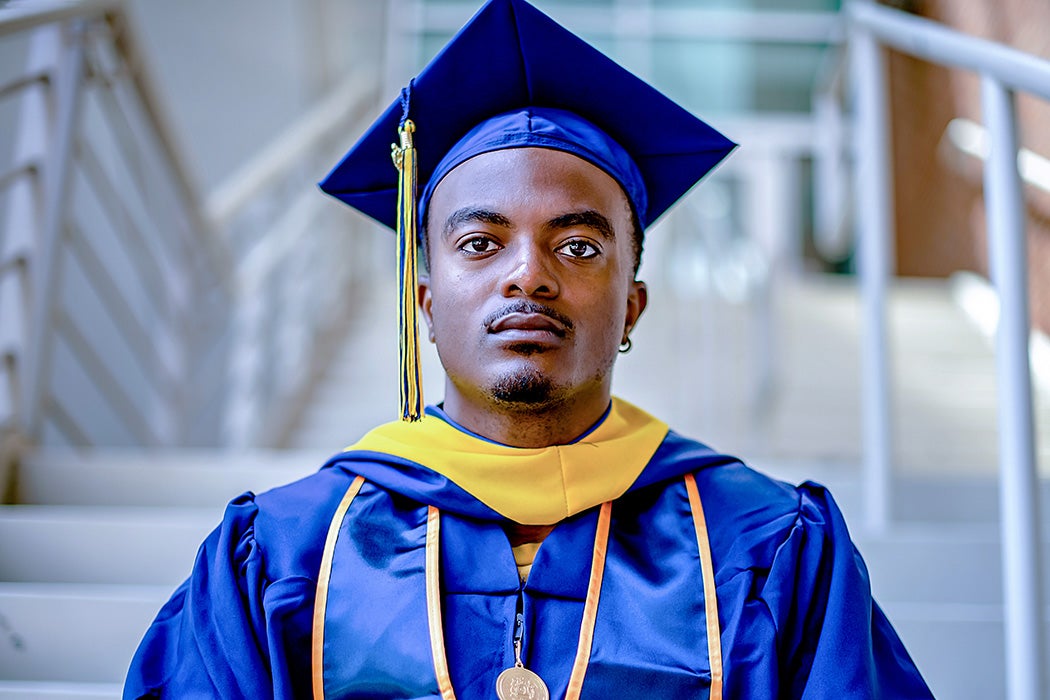Racism affects the lives of most Black Americans, shaping how they navigate and see themselves in social, academic, and professional spaces. For disabled Black Americans, racism comes with an additional demand, particularly in academic settings. Many institutions of higher education in the United States have a well-documented past of racial segregation, but the education system as a whole has also historically segregated students with disabilities. These students have been viewed as “defective” and in need of repair, away from the eyes of the mainstream school population.
Black American students with disabilities may find themselves at “the precarious intersections of disability, race, and cultural jeopardy,” write Special Education scholar Joy Banks and Disability Coordinator Michael S. Hughes. Thus located, they face the challenge of “internally affirm[ing] the integrity of their disability and cultural identities while confronting the norms of an educational system that has been historically hostile to those identities.”
Banks and Hughes interviewed twelve Black disabled male students at a historically Black Mid-Atlantic university (HBCU) to understand how such pressures have affected their academic experiences. The selected students, all recruited through the university’s disabilities support services (Hughes was the office director at the time), had documented disabilities that included ADHD, hearing loss, and cerebral palsy, among others. Ages ranged from nineteen to twenty-eight.
Several of the students identified “pejorative stereotypes pervasive in the dominant cultural narrative surrounding individuals with disabilities and African American men.” They explained how the stereotypes shaped their self-images, contributed to feelings of social isolation, and amplified the perceptions of other students that disabled people have limited intellectual abilities. They were reminded of their marginality throughout the day: during peer interactions, because of the refusal of accommodations by faculty, and as a result of the questioning of their competence in the workplace. The negative perceptions repeatedly popped up in social, academic, and professional contexts.
“Multiple participants observed the cultural message that references the relative intellectual inferiority of both African American men and individuals with disability,” write Banks and Hughes. But the responses to the message differed amongst the interviewees. While they agreed on the interconnection of race, gender, and disability, some “disagreed as to which contributed the most to their oppression and consequences of those negative discourses.”
Students with visible disabilities, such as cerebral palsy or hearing loss, considered their disability to be the primary cause of their oppression. “I think it is more geared toward the disability as opposed to race,” concluded one such student about the discrimination he experienced. Students with invisible disabilities, such as a learning disability or ADHD, posited that “expectations for their race/ethnicity” added the most pressure to their lives.
“I feel like I really only have to overcome one [form of oppression],” explained a student with an invisible disability. “I only have to overcome race, because when people see me they can tell I am African American, but they cannot tell that I have a learning disability.” The students felt that they could develop strategies such as working harder to counteract the negative messages they received about their race, just like able-bodied Black men.
The students in fact developed a number of strategies to resist the dominant cultural narratives around disability and the effects they might have on their education. “The disability label functioned as a source of motivation but also caused frustration,” note the authors. As the number of negative encounters and effects began to pile up, the students started to develop “personal narratives that intentionally debunk[ed] pejorative themes found within the dominant narrative.” This could take form of rejecting the “disability” label altogether—describing oneself instead as having “a cognitive difference”—or by drawing on their family members for strength.
“[T]here were frequent discussions of their parents’ beliefs that obtainment of an education is an act of resistance,” write Banks and Hughes. And in choosing to matriculate at an HBCU, they joined a community “that was culturally responsive and systematically affirmed cultural formations of contemporary and historical African American experiences.”
Weekly Newsletter
Participants in the study “believed attendance at this university reduced the negative stigmatization connected with having a disability and those linked to being an African American male college student,” Banks and Hughes explain. Despite resistance to provide disability accommodations by some faculty, the students felt that, overall, faculty and staff were supportive and invested in their success. As one student put it:
For the most part there is [a] third hand reached out to you to make sure [that] if the two hands that you have are not enough for you, there is a third hand reached out for you to make sure you obtain everything you can…to make sure you do what you are supposed to do.
Because their chosen university “honors its heritage by fostering high-quality academics in an inclusive environment to a multicultural student population that has been historically marginalized,” Banks and Hughes write. Yet even in this context, some students found that when they did reveal their disability, “faculty and peers often questioned their intellectual aptitude.” As a result, students often took a step back from class participation “in order to avoid further humiliation due to the faculty members’ unwarranted pity, or, in some cases, hostility.”
Banks and Hughes do, however, encourage further study of the experiences of Black students with disabilities at schools other than HBCUs. They also suggest schools need a “framework that holds college faculty, administrators, and peers accountable for stereotyping and stigmatizing individuals with disabilities.” To build that, however, may require “uncomfortable dialogues between faculty and students about dehumanizing acts of disability oppression and discrimination on college campuses.”







